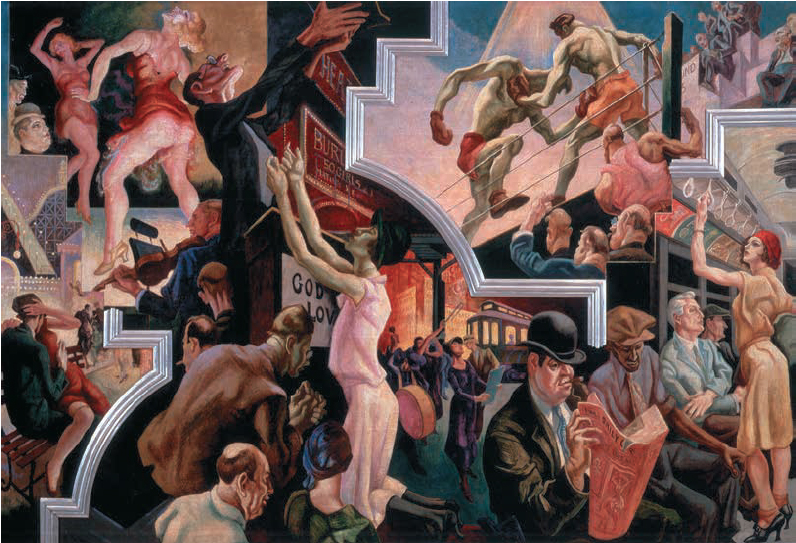How did the second phase of the New Deal differ from the first?
Printed Page 728

CHRONOLOGY
1934
- – Indian Reorganization Act.
1935
- – Works Progress Administration (WPA) is created.
- – Wagner Act.
- – Committee for Industrial Organization (CIO) is founded.
- – Social Security Act.
1937
- – Sit-down strike at General Motors plant in Flint, Michigan.
THE POPULAR MANDATE for the New Deal revealed by the congressional elections persuaded Roosevelt to press ahead with bold new efforts to achieve relief, recovery, and reform. Despite the initiatives of the Hundred Days, the depression still strangled the economy. In 1935, Roosevelt capitalized on his congressional majorities to enact major new programs that signaled the emergence of an American welfare state.
Taken together, these New Deal efforts stretched a safety net under the lives of ordinary Americans, including such landmark initiatives as Social Security, which provided modest pensions for the elderly, and the Wagner Act, which encouraged the organization of labor unions. Although many citizens remained unprotected, New Deal programs helped millions with jobs, relief, and government support. Knitting together the safety net was the idea that, when individual Americans suffered because of forces beyond their control, the federal government had the responsibility to support and protect them. The safety net of welfare programs tied the political loyalty of working people to the New Deal and the Democratic Party.
CHAPTER LOCATOR
How did Franklin D. Roosevelt win the 1932 election?
What were the goals and achievements of the first New Deal?
Who opposed the New Deal and why?
How did the second phase of the New Deal differ from the first?
What major political trends changed during the late 1930s?
Conclusion: What were the achievements and limitations of the New Deal?
 LearningCurve
LearningCurve
Check what you know.